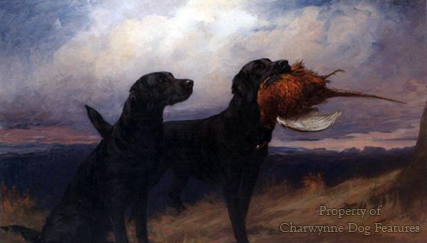508 Gundogs 1900-1950
EARLY TWENTIETH CENTURY GUNDOGS
by David Hancock
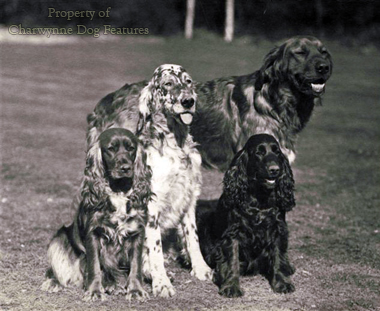 In the first half of the twentieth century, sporting dogs were under threat, gundogs especially. Two world wars saw many a famous kennel disappear and a subsequent rise in gundogs becoming purely pets had a lasting effect. Either side of 1900 it was not unknown for a keen wealthy sportsman to own several hundred gundogs, as William Humphrey exemplified with his kennel of over a thousand gundogs. The demands of two world wars saw an end to such extravagance. The extraordinary popularity of the gundog breeds in the first fifty years of the last century was led by the unprecedented rise of the Labrador Retriever. The half-century ended with the introduction of the HPR breeds and their adoption by increasing numbers of sportsmen in the UK.
In the first half of the twentieth century, sporting dogs were under threat, gundogs especially. Two world wars saw many a famous kennel disappear and a subsequent rise in gundogs becoming purely pets had a lasting effect. Either side of 1900 it was not unknown for a keen wealthy sportsman to own several hundred gundogs, as William Humphrey exemplified with his kennel of over a thousand gundogs. The demands of two world wars saw an end to such extravagance. The extraordinary popularity of the gundog breeds in the first fifty years of the last century was led by the unprecedented rise of the Labrador Retriever. The half-century ended with the introduction of the HPR breeds and their adoption by increasing numbers of sportsmen in the UK.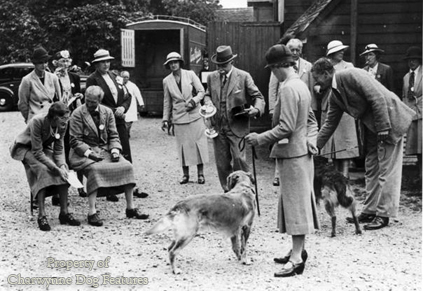
If you look at the Kennel Club registrations in the period 1900-1950, you can soon identify the mixed fortunes of the gundog breeds. In 1908, for example, gundog breed numbers read as follows: English Setters 240, Gordon Setters 27, Irish Setters 188, Pointers 182, Retrievers, Curly-coated 163, Flat-coated 474, Goldens 0, Spaniels, Clumber 182, Cocker 535, Field 280, Irish Water 38, English Springer 46, Welsh Springer 38 and Sussex 19. At the end of the Great War, only the Labrador had increased its numbers, with only 2 Welsh Springers and 2 Gordon Setters being registered in 1919. But a year later both the Labrador and the Cocker Spaniel had more than doubled their number. Over 50 Golden Retrievers were registered too.
In 1927, over 1,300 Irish Setters, over 1,400 Labradors, nearly 4,500 Cockers and over 1,300 English Springers made their debut; the age of the pet gundog had arrived. The show ring too made its mark. Gundogs could triumph because of their looks rather than their performance. Dual-purpose dogs were still comparatively common and show ring judges nearly always had knowledge of gundogs at work in the field. Away from the shooting field however the needless undesirable indulgences crept in: over-furnished legs and tails, upright shoulders, especially in Pointers, and added weight in Clumbers. The latter were nevertheless still tighter-eyed than they are today and far less cloddy. King George V, in the 1920s, shot over the lighter type but exhibited the heavier dog.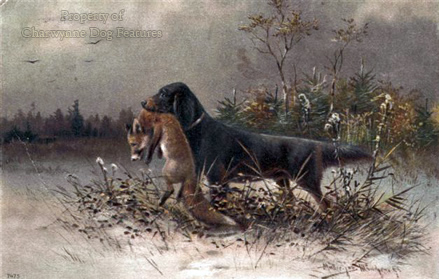
The early years of the twentieth century saw more structure and regulation in the gundog world. In 1907 the Kennel Club instituted field trials for retrievers, after earlier attempts had led to The Retriever Society being founded in 1900. About this time, dogs from the same litter could be registered as a Lab if smooth-coated and a Flat-coat if wavy-coated. So, in 1916, cross-bred retrievers were allowed to be registered; 93 were registered as such in 1923. There was a place too for 'gamefinders', allowing dogs of any ancestry but with some retriever blood to be registered. The English Springer Spaniel was recognised as a breed in 1902; breed clubs began to appear, with the Curly club starting in 1933 and the Goldie's club forming in 1912. 1904 was an important year for Labradors, when Holland-Hibbert's Munden Single received a Certificate of Merit, on the first appearance of Labs at a field trial.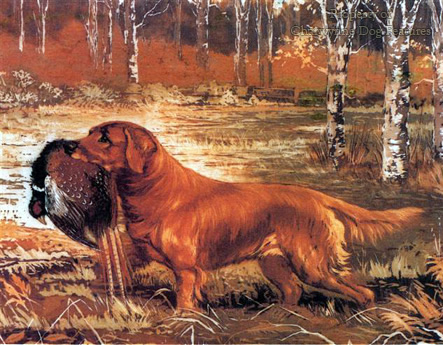
One regrettable feature in spaniels was the 'bassetization' of Field Spaniels, which produced low-slung specimens with long backs and shortened legs and was only rectified when the Field Spaniel Society set to work. Until the formation of the Irish Water Spaniel Association in 1926, little had been seen of these dogs in public and it was the policy of the newly-formed body to organise field trials to test their breed. The British Gordon Setter Club came into being at the end of the 1920s, which did much to revive interest in the breed.
Although Irish Setters have long enjoyed a reputation as working dogs, they had not been run much at English field trials until Mrs F Nagle founded a kennel of them at Sulhamstead, near Reading. In 1929 and 1935 her Sulhamstead Brantome d'Or won the KC Derby for Pointer and Setter puppies, with her Carrie d'Or coming 4th in 1932 and Bluff d'Or third in 1933. The breed's registrations went from 308 in 1921 to 1,359 in 1927, such was the interest in the pet/show world. It was paradoxically, the field trial world which kept the English Setter going. From 1911 until 1925, Capt Gilbert Blaine used his English Setters to work with trained falcons near Caithness. He needed to have fast wide rangers that had really good 'long' noses and never made false points.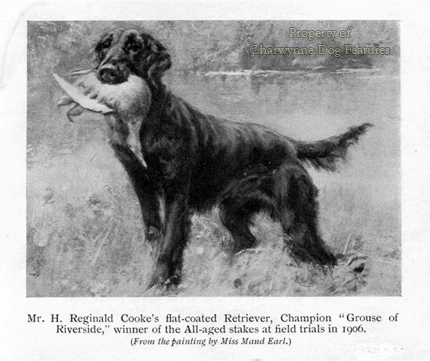
In both 1913 and 1922, Capt Blaine killed over 200 brace of grouse with his peregrines. Later on, Lorna Countess Howe added English Setters and Pointers to her strong kennel of gundogs. It was largely through her influence that Labradors have enjoyed more fame as dual purpose dogs than any other gundogs. The Labrador Retriever Club was founded in 1916, with her as its secretary; she did her own breaking and was the first of her gender to judge a KC trial. Registrations of this breed went from 140 in 1910 to 1410 in 1927 and have never looked back. The English Springer too triumphed, going from 70 in 1910 to over 1,320 in 1927. These two gundog breeds have truly been the sporting breeds of the last century.
But the post World War II sportsman had a new shooting style to pursue and a different type of gundog to support it. Army officers stationed in Germany saw the all-rounders, the HPR breeds, and liked what they saw. With little or no experience of these multi-purpose gundogs, these expatriate sportsmen, using mainly German short-haired pointers, became very impressed by their capabilities and realised the potential of a pointer-retriever. This breed was imported into America similarly after the Great War and so became established there so much earlier. For us, it was just another example of our bringing talented sporting dogs across the channel, a timeless exercise. This time however, unlike previous centuries, their blood would be kept distinct and not used to strengthen the performance of native stock. In the gundog world, this was a significant legacy of the first fifty years of the twentieth century.
